Pinus koraiensis – Korean Pine

One must have a mind of winter
To regard the frost and boughs
Of the pine-trees crusted with snow…
-Wallace Stevens
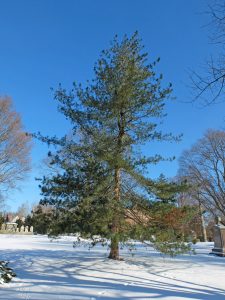
Let’s begin this new year with something positive from Korea and Russia, as well as mention of Siberian Tigers. Pines, Pinus are the largest and most diverse genus of conifers, with at least 125 species world-wide. With two-dozen diverse species of Pinus growing within Mount Auburn, herein we profile the Korean Pine, Pinus koraiensis, one of the handsomest cold-hardy pines. As the common name implies this is native to Korea, but also to parts of northeastern China, Pacific Russia, Kamchatka and on the high mountains of the Japanese island of Honshu.
Pine trees have had strong historic symbolism in Korean culture, held in deep reverence, often connoting longevity, virtue, honor, strength and/or wisdom. Pine branches frequently were left at the doors when babies were born as congratulations. At life’s end many coffins were made of pinewood. Korean pine was regarded as a messenger that transports the souls of the dead to the afterlife.
The pipes of heaven sing
-ANON.
When wind blows through the pines…
First described in western botany in the 1840s, this pine grows 40-60 (100)-feet tall. The evergreen needles, clustered in fascicles of fives, are 2 ½- to 4 ½ -inches long. An important timber tree wherever it occurs, its wood is of good quality, fairly decay-resistant, soft and light and easy to work in milling and carpentry. Its many uses include building timbers, flooring, furniture, sports equipment, musical instruments, boat building, plywood and veneers among other uses.
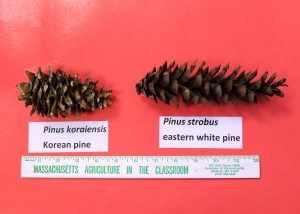
Almost all the above-described characteristics are like North America’s Eastern White Pine. Pinus strobus. However, there are differences between the cones of these two species (and among other species). Visually the cones of Korean Pine appear somewhat shorter (3 ½ to 6-inches) and stouter (2- 2 ½-inches) than those of Eastern White Pine. More notable is the economic importance of its cones. This is one of about 20 Pinus species world-wide producing edible seeds, large enough for human food. The ½-inch, triangular-obovoid, wingless seeds’ human edibility has been recorded over two millennia.
In addition to longstanding whole, raw usage, modern analysis confirming the richness of vegetable oil and high nutritive value elevated their use in the food processing industry. They have export value to Asia, Europe, and the USA, in addition to significant domestic usage.
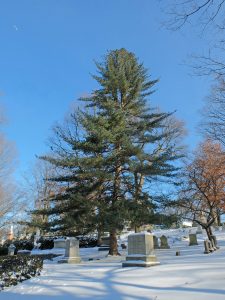
Allow here two analogous commercially sold pine nut mentions. The Italian Stone Pine, Pinus pinea has grown for millennia in Portugal, Mediterranean Europe and North Africa. Archaeologists have found their pine nut shells in refuse dumps of Roman encampments, the ruins of Pompeii/Mount Vesuvius and elsewhere. This major European pine nut tree is not cold-hardy enough to grow in Mount Auburn. The Common Pinon, Pinus edulus is native to the Upper Sonoran Zone in New Mexico, Arizona, Utah, southern Colorado and west Texas. Its ½-inch long seeds are highly prized by wildlife as well as humans and large quantities are sold throughout American stores. This major American pine nut producer is likewise not growing at Mount Auburn.
Refocusing attention on Korean Pine, its high value as an important timber tree coupled with over-exploitation for its edible seed has resulted in forest loss and/or decline. Data from Korea, northeastern China and Russia have confirmed this ongoing trend.
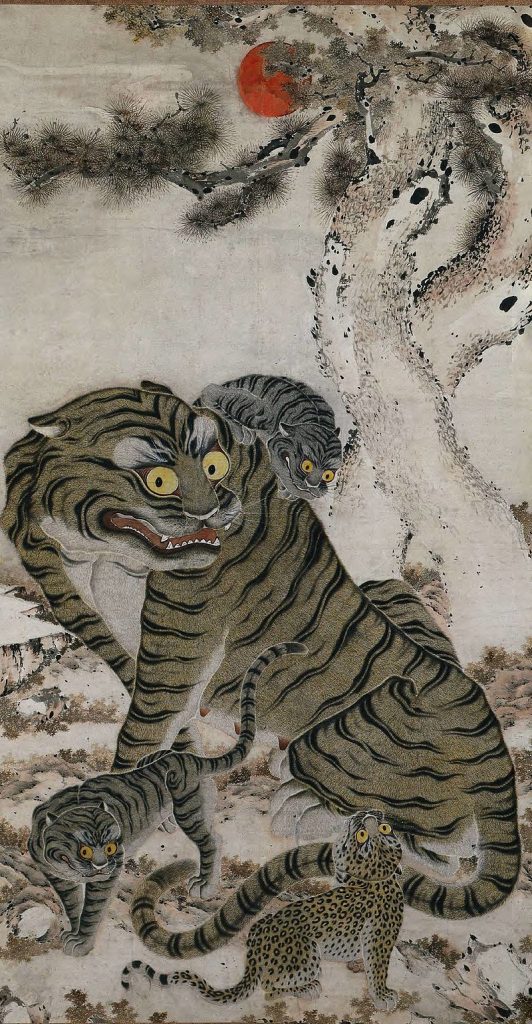
The Tumen River serves as the only border between North Korea and Russia. Crossing this border enters Primorsky province. This includes the Sikhote Alin mountain region. CITES (Convention on International Trade in Endangered Species of Wild Fauna and Flora) reports that more than 90% of the world’s remaining population of Siberian Tigers, Panthera tigris altaica live within Korean Pine forest habitat in this region. Accordingly, the Russian Government in 2010 banned logging of Pinus koraiensis in its territories to help the conservation of the tiger. In a bit of irony, while the Siberian Tiger is South Korea’s national animal, it was hunted into extinction during the Japanese occupation, the last recorded kill in 1922.
…Tiger! Tiger! Burning bright
In the forests of the night
What immortal hand or eye
Dare frame the fearful symmetry?
-William Blake
Without Siberian tigers and not even a guarantee of some pine nuts, on a future visit to Mount Auburn look for some of our Korean Pines, Pinus koraiensis on Narcissus Path, Daphne Path, Primrose Path, Goldenrod Path, Honeysuckle Path, Mist Path, Oleander Path, Birch Avenue, Cypress Avenue and Fir Avenue among other locations.
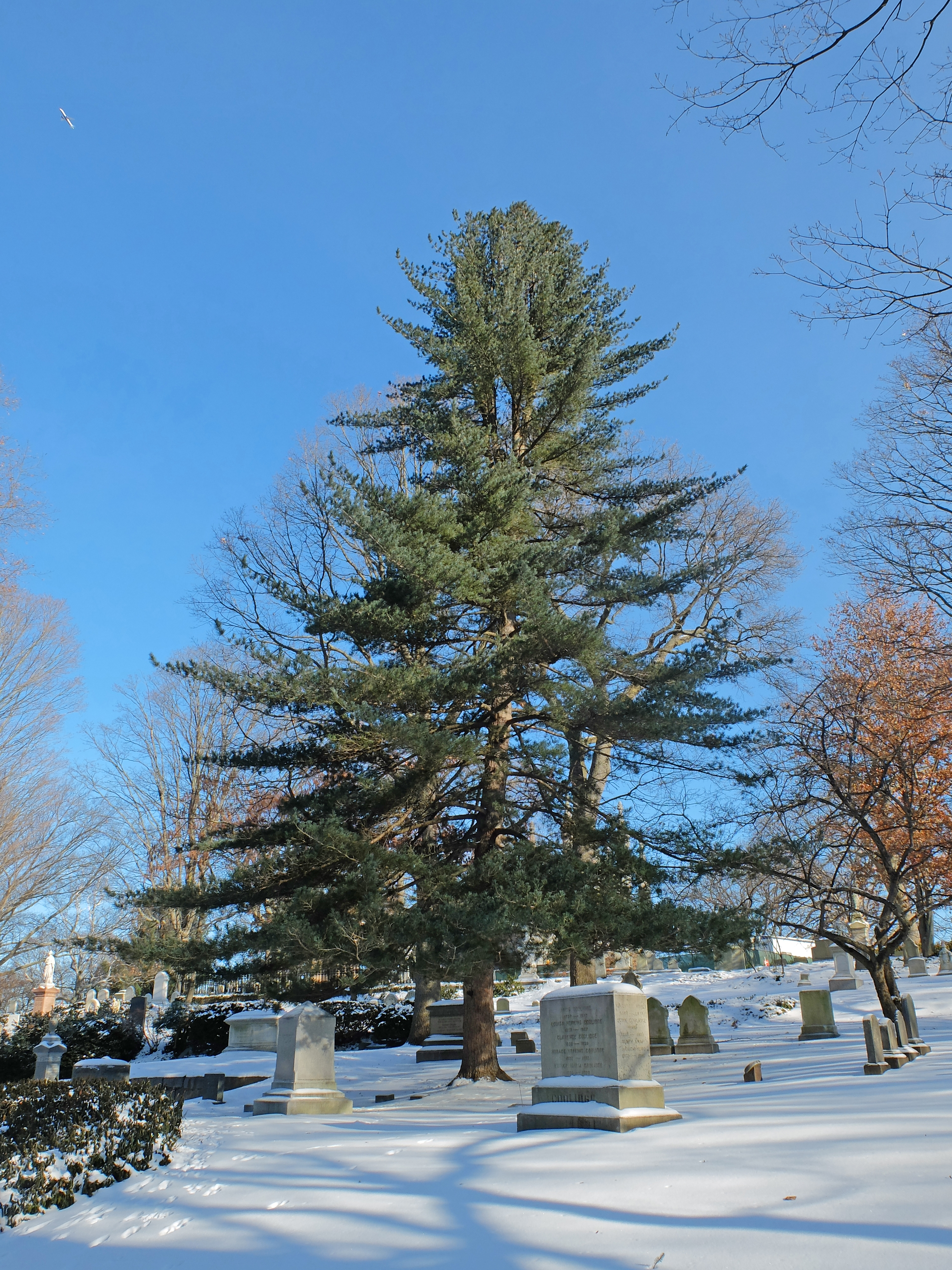


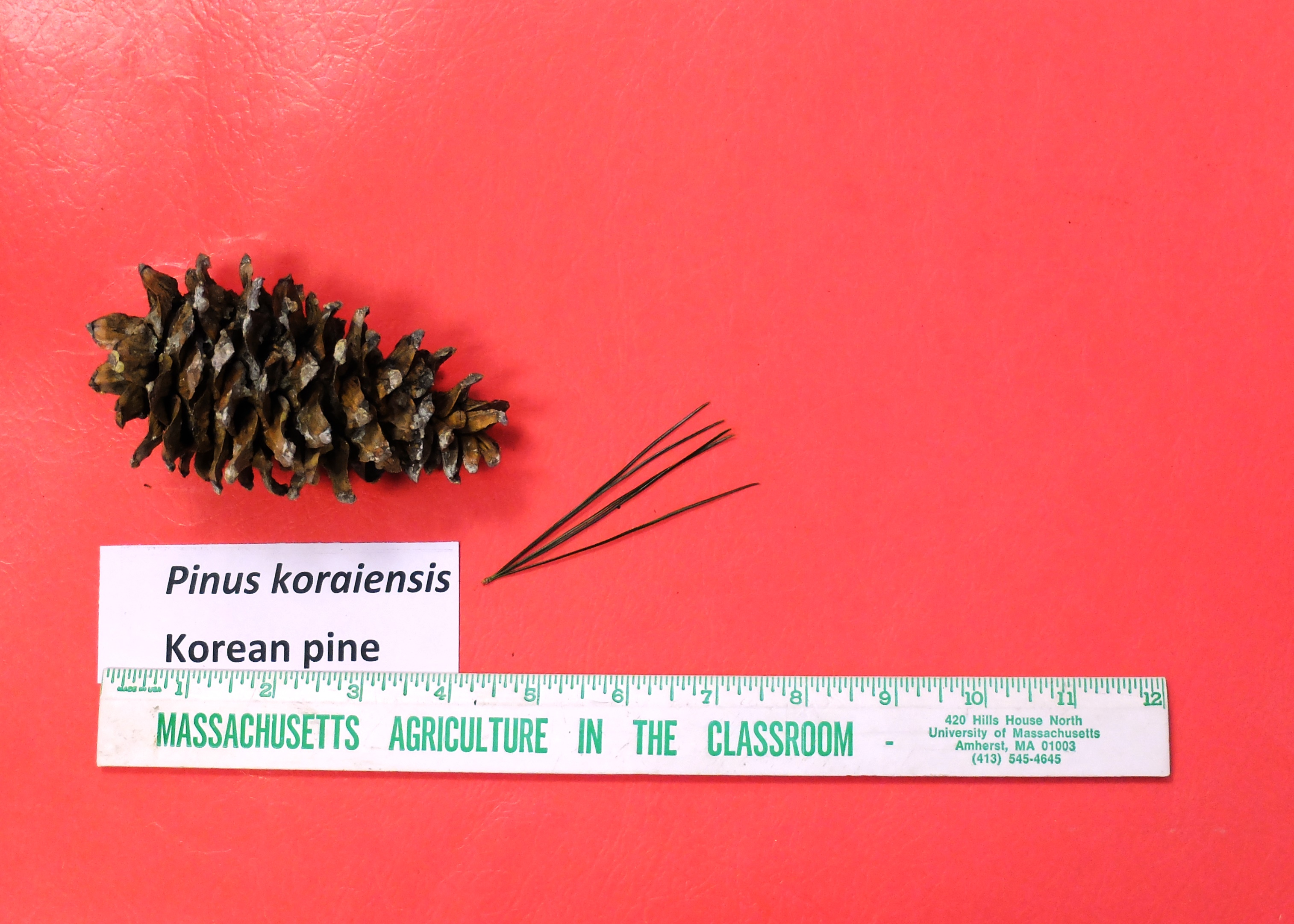
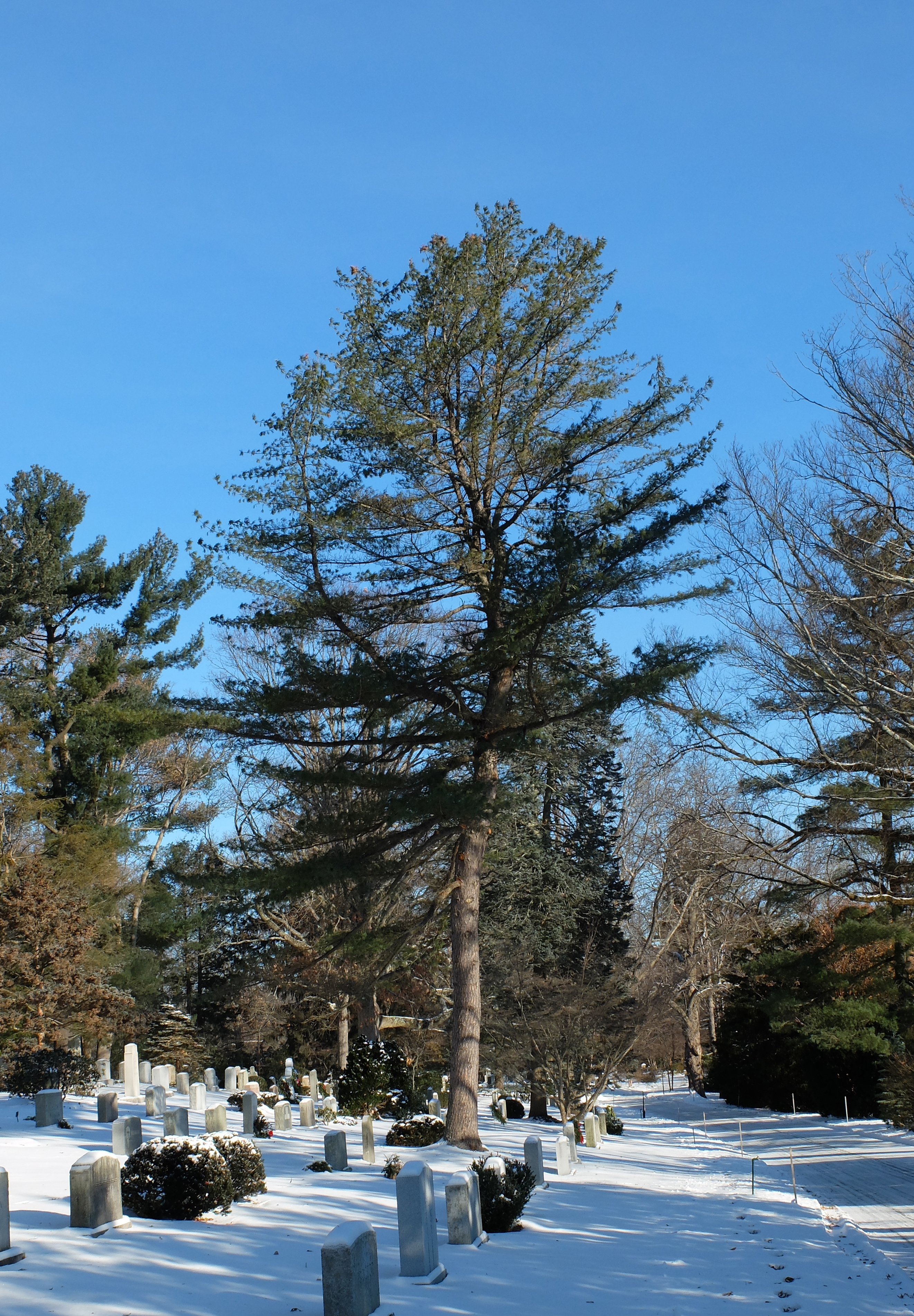
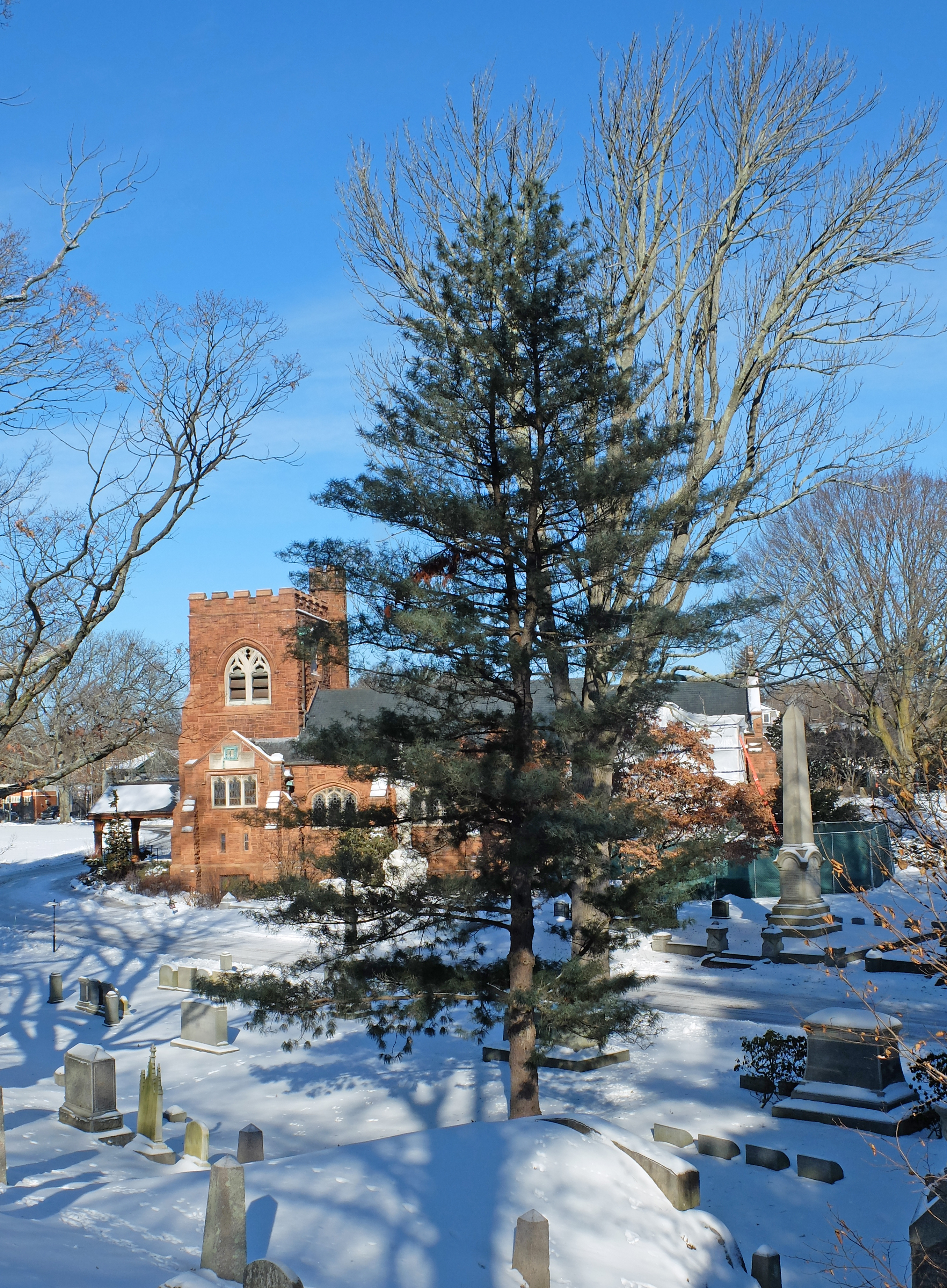
Leave a Reply to livepine Cancel reply